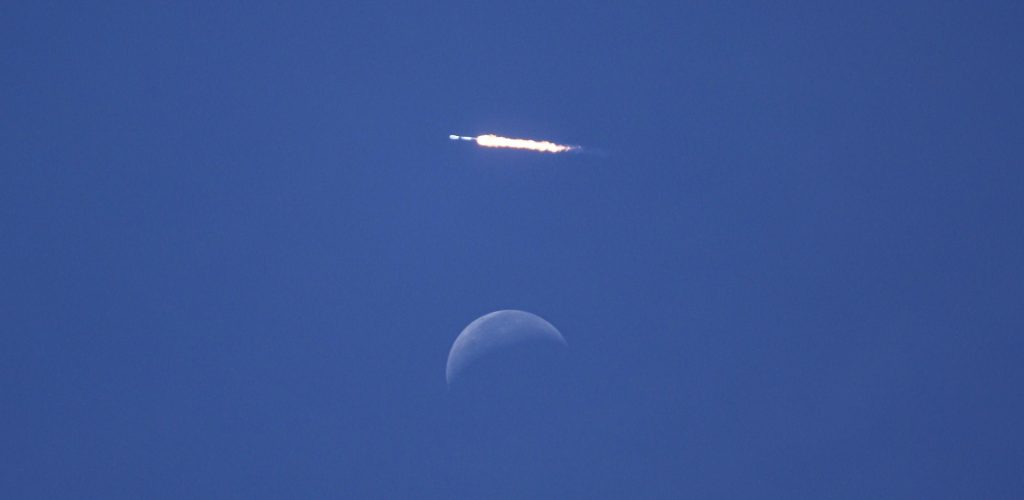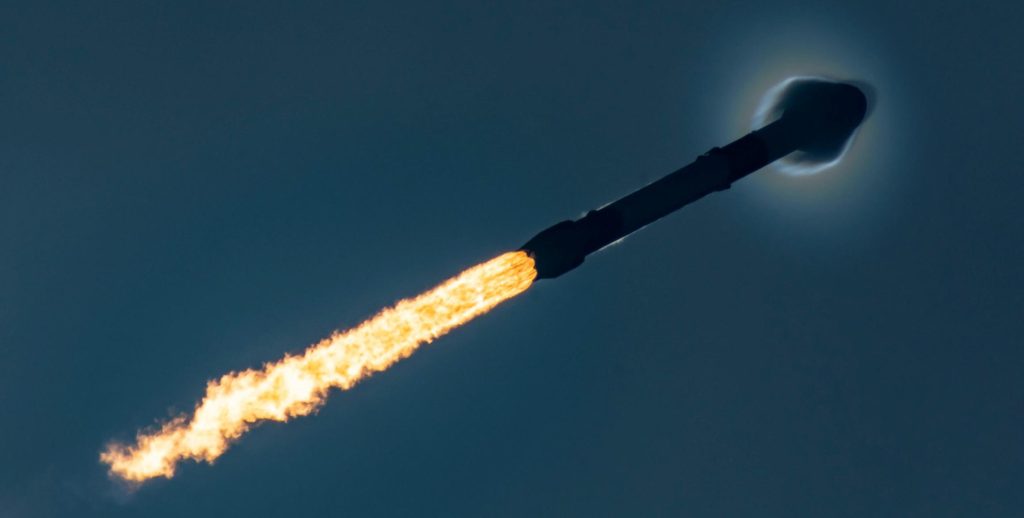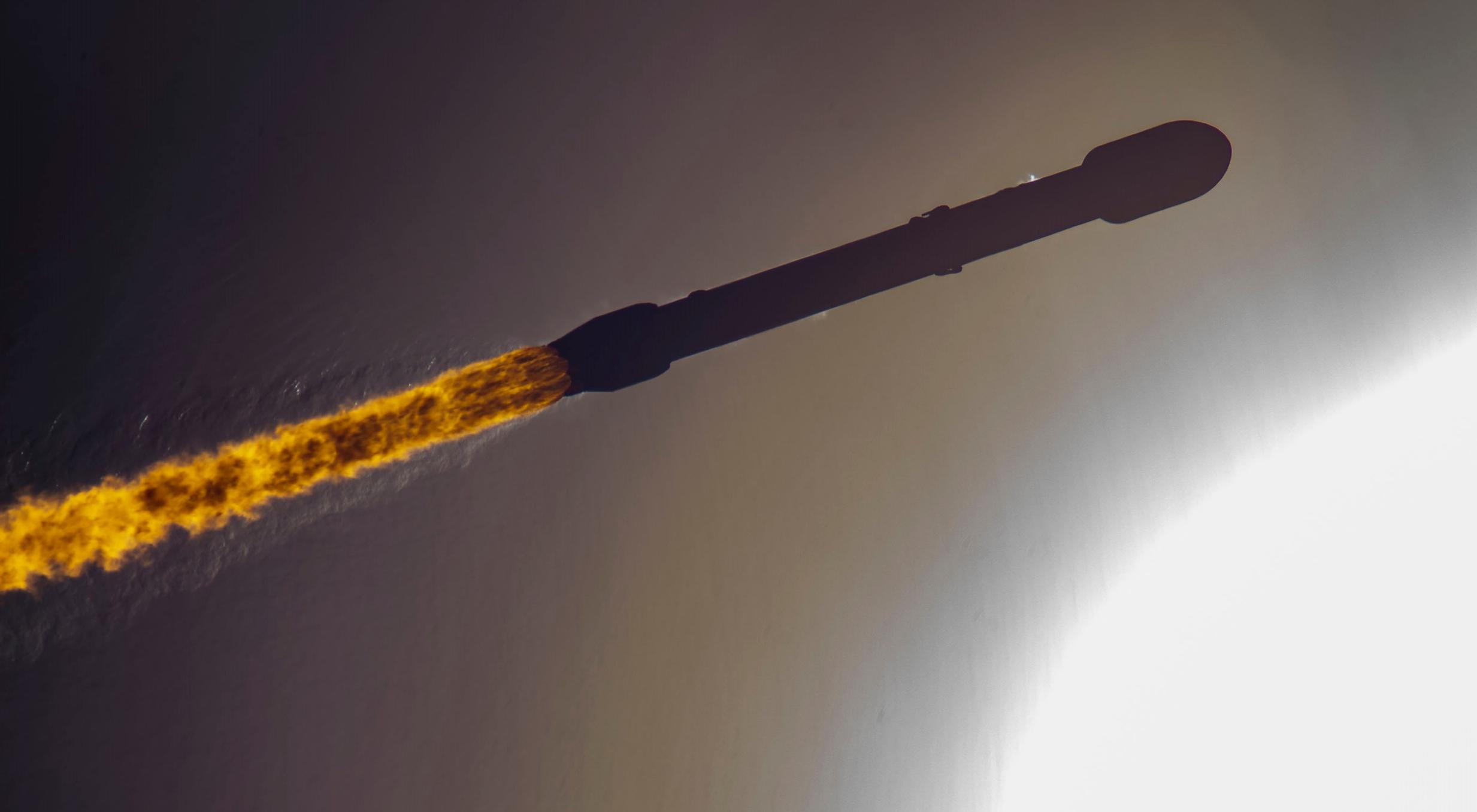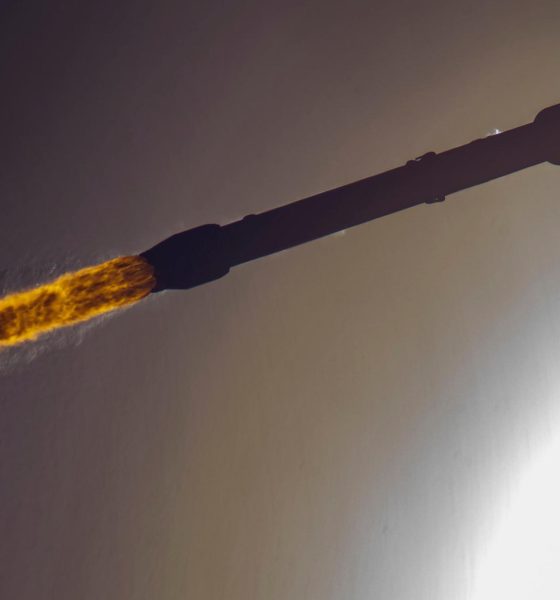SpaceX has rounded out its busiest July ever with a pair of Falcon 9 Starlink launches, simultaneously breaking its annual launch record less than seven full months into 2022.
The company has now completed six launches – five of which were Starlink missions – this month. The last two missions launched about 44 hours apart from opposite coasts of the United States – Starlink 3-2 from California’s Vandenberg Space Force Base (VSFB) on July 22nd and Starlink 4-25 from Florida’s Kennedy Space Center (KSC) on the 24th. Both Falcon 9 fairings and boosters were reused, as is now the norm. Both boosters also landed without issue, extending SpaceX’s record of consecutively successful landings to 59.
From the West Coast, booster B1071 helped launch 46 Starlink V1.5 satellites into a sun-synchronous (semi-polar) orbit. On the East Coast, Falcon B1062 sent 53 more Starlink V1.5 satellites on their way to a more equatorial orbit for its third Starlink mission overall.


All told, SpaceX managed to launch five batches of Starlink satellites and a Cargo Dragon spacecraft to the International Space Station between July 7th and July 24th – six Falcon 9 launches in 17 days. It’s the third time SpaceX has completed six launches in the same calendar month, but the first time the company has completed six launches in less than three weeks. The fact that Falcon 9’s launch cadence has come to feel so routine so quickly is nothing less than a testament to SpaceX’s excellence, as only one other rocket in the 65-year history of orbital spaceflight (the Soviet ‘Soyuz-U’) can still claim to have launched more in such a short period.
In fact, as previously reported, SpaceX itself is already making six launches in one calendar month seem ordinary. The company managed eight successful Falcon 9 launches in 30 days between June 17th and July 17th – narrowly falling short of Soyuz-U, which completed eight launches in less than 28 days in 1980.
What SpaceX can lay claim to with certainty, however, is consistently launching more satellites in short periods of time than any other country, agency, or company in history. In July, SpaceX launched 251 Starlink satellites, expanding its immense constellation by ~10%. SpaceX completed five Starlink missions in less than 30 days twice before, in May 2021 and 2022, with the former accounting for a record 292 Starlink satellites. Including non-Starlink payloads, SpaceX has technically launched 323 satellites in 27 days.
According to astrophysicist Jonathan McDowell, who independently monitors SpaceX’s satellites, 2665 working Starlink satellites are now in orbit, 2155 of which have reached operational orbits. 451 Starlink V1.5 satellites – all launched since April 2022 – are still in the process of raising their orbits and should be ready to join the operational constellation within a few weeks to three months.
Finally, Starlink 3-2 (July 22nd) was SpaceX’s 32nd launch of 2022, breaking its annual record of 31 launches (set in 2021) just 55% of the way into the new year. Every Falcon launch between now and the start of 2023 will set a new SpaceX record, which stands at 33 launches after Starlink 4-25. The company reportedly has up to seven Falcon 9 launches scheduled in August 2022.

News
Tesla FSD fleet is nearing 7 billion total miles, including 2.5 billion city miles
As can be seen on Tesla’s official FSD webpage, vehicles equipped with the system have now navigated over 6.99 billion miles.

Tesla’s Full Self-Driving (Supervised) fleet is closing in on almost 7 billion total miles driven, as per data posted by the company on its official FSD webpage.
These figures hint at the massive scale of data fueling Tesla’s rapid FSD improvements, which have been quite notable as of late.
FSD mileage milestones
As can be seen on Tesla’s official FSD webpage, vehicles equipped with the system have now navigated over 6.99 billion miles. Tesla owner and avid FSD tester Whole Mars Catalog also shared a screenshot indicating that from the nearly 7 billion miles traveled by the FSD fleet, more than 2.5 billion miles were driven inside cities.
City miles are particularly valuable for complex urban scenarios like unprotected turns, pedestrian interactions, and traffic lights. This is also the difference-maker for FSD, as only complex solutions, such as Waymo’s self-driving taxis, operate similarly on inner-city streets. And even then, incidents such as the San Francisco blackouts have proven challenging for sensor-rich vehicles like Waymos.
Tesla’s data edge
Tesla has a number of advantages in the autonomous vehicle sector, one of which is the size of its fleet and the number of vehicles training FSD on real-world roads. Tesla’s nearly 7 billion FSD miles then allow the company to roll out updates that make its vehicles behave like they are being driven by experienced drivers, even if they are operating on their own.
So notable are Tesla’s improvements to FSD that NVIDIA Director of Robotics Jim Fan, after experiencing FSD v14, noted that the system is the first AI that passes what he described as a “Physical Turing Test.”
“Despite knowing exactly how robot learning works, I still find it magical watching the steering wheel turn by itself. First it feels surreal, next it becomes routine. Then, like the smartphone, taking it away actively hurts. This is how humanity gets rewired and glued to god-like technologies,” Fan wrote in a post on X.
News
Tesla starts showing how FSD will change lives in Europe
Local officials tested the system on narrow country roads and were impressed by FSD’s smooth, human-like driving, with some calling the service a game-changer for everyday life in areas that are far from urban centers.

Tesla has launched Europe’s first public shuttle service using Full Self-Driving (Supervised) in the rural Eifelkreis Bitburg-Prüm region of Germany, demonstrating how the technology can restore independence and mobility for people who struggle with limited transport options.
Local officials tested the system on narrow country roads and were impressed by FSD’s smooth, human-like driving, with some calling the service a game-changer for everyday life in areas that are far from urban centers.
Officials see real impact on rural residents
Arzfeld Mayor Johannes Kuhl and District Administrator Andreas Kruppert personally tested the Tesla shuttle service. This allowed them to see just how well FSD navigated winding lanes and rural roads confidently. Kruppert said, “Autonomous driving sounds like science fiction to many, but we simply see here that it works totally well in rural regions too.” Kuhl, for his part, also noted that FSD “feels like a very experienced driver.”
The pilot complements the area’s “Citizen Bus” program, which provides on-demand rides for elderly residents who can no longer drive themselves. Tesla Europe shared a video of a demonstration of the service, highlighting how FSD gives people their freedom back, even in places where public transport is not as prevalent.
What the Ministry for Economic Affairs and Transport says
Rhineland-Palatinate’s Minister Daniela Schmitt supported the project, praising the collaboration that made this “first of its kind in Europe” possible. As per the ministry, the rural rollout for the service shows FSD’s potential beyond major cities, and it delivers tangible benefits like grocery runs, doctor visits, and social connections for isolated residents.
“Reliable and flexible mobility is especially vital in rural areas. With the launch of a shuttle service using self-driving vehicles (FSD supervised) by Tesla in the Eifelkreis Bitburg-Prüm, an innovative pilot project is now getting underway that complements local community bus services. It is the first project of its kind in Europe.
“The result is a real gain for rural mobility: greater accessibility, more flexibility and tangible benefits for everyday life. A strong signal for innovation, cooperation and future-oriented mobility beyond urban centers,” the ministry wrote in a LinkedIn post.
News
Tesla China quietly posts Robotaxi-related job listing
Tesla China is currently seeking a Low Voltage Electrical Engineer to work on circuit board design for the company’s autonomous vehicles.

Tesla has posted a new job listing in Shanghai explicitly tied to its Robotaxi program, fueling speculation that the company is preparing to launch its dedicated autonomous ride-hailing service in China.
As noted in the listing, Tesla China is currently seeking a Low Voltage Electrical Engineer to work on circuit board design for the company’s autonomous vehicles.
Robotaxi-specific role
The listing, which was shared on social media platform X by industry watcher @tslaming, suggested that Tesla China is looking to fill the role urgently. The job listing itself specifically mentions that the person hired for the role will be working on the Low Voltage Hardware team, which would design the circuit boards that would serve as the nervous system of the Robotaxi.
Key tasks for the role, as indicated in the job listing, include collaboration with PCB layout, firmware, mechanical, program management, and validation teams, among other responsibilities. The role is based in Shanghai.
China Robotaxi launch
China represents a massive potential market for robotaxis, with its dense urban centers and supportive policies in select cities. Tesla has limited permission to roll out FSD in the country, though despite this, its vehicles have been hailed as among the best in the market when it comes to autonomous features. So far, at least, it appears that China supports Tesla’s FSD and Robotaxi rollout.
This was hinted at in November, when Tesla brought the Cybercab to the 8th China International Import Expo (CIIE) in Shanghai, marking the first time that the autonomous two-seater was brought to the Asia-Pacific region. The vehicle, despite not having a release date in China, received a significant amount of interest among the event’s attendees.










